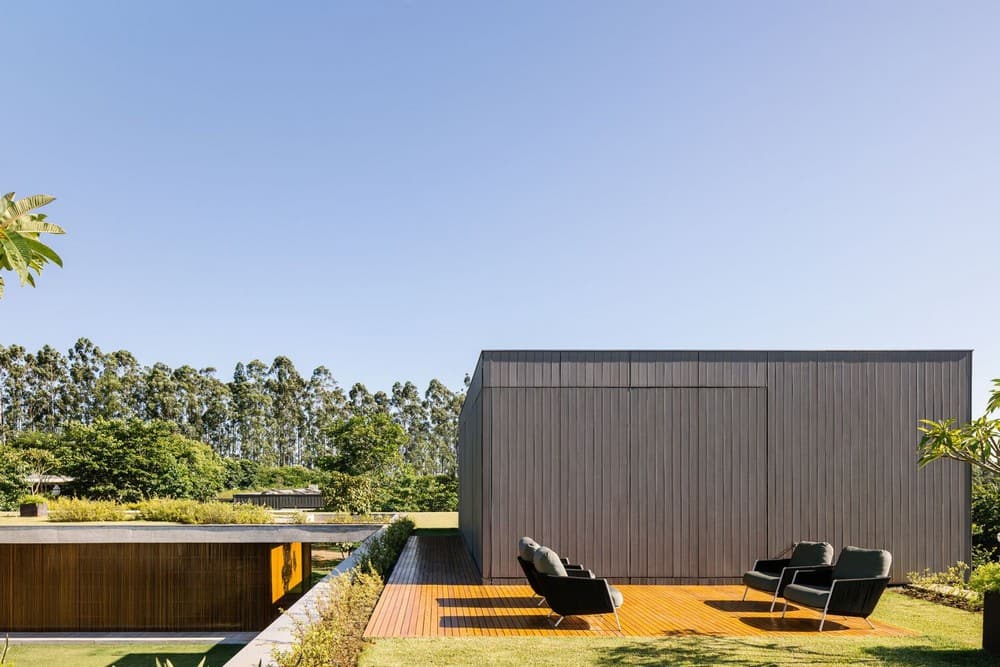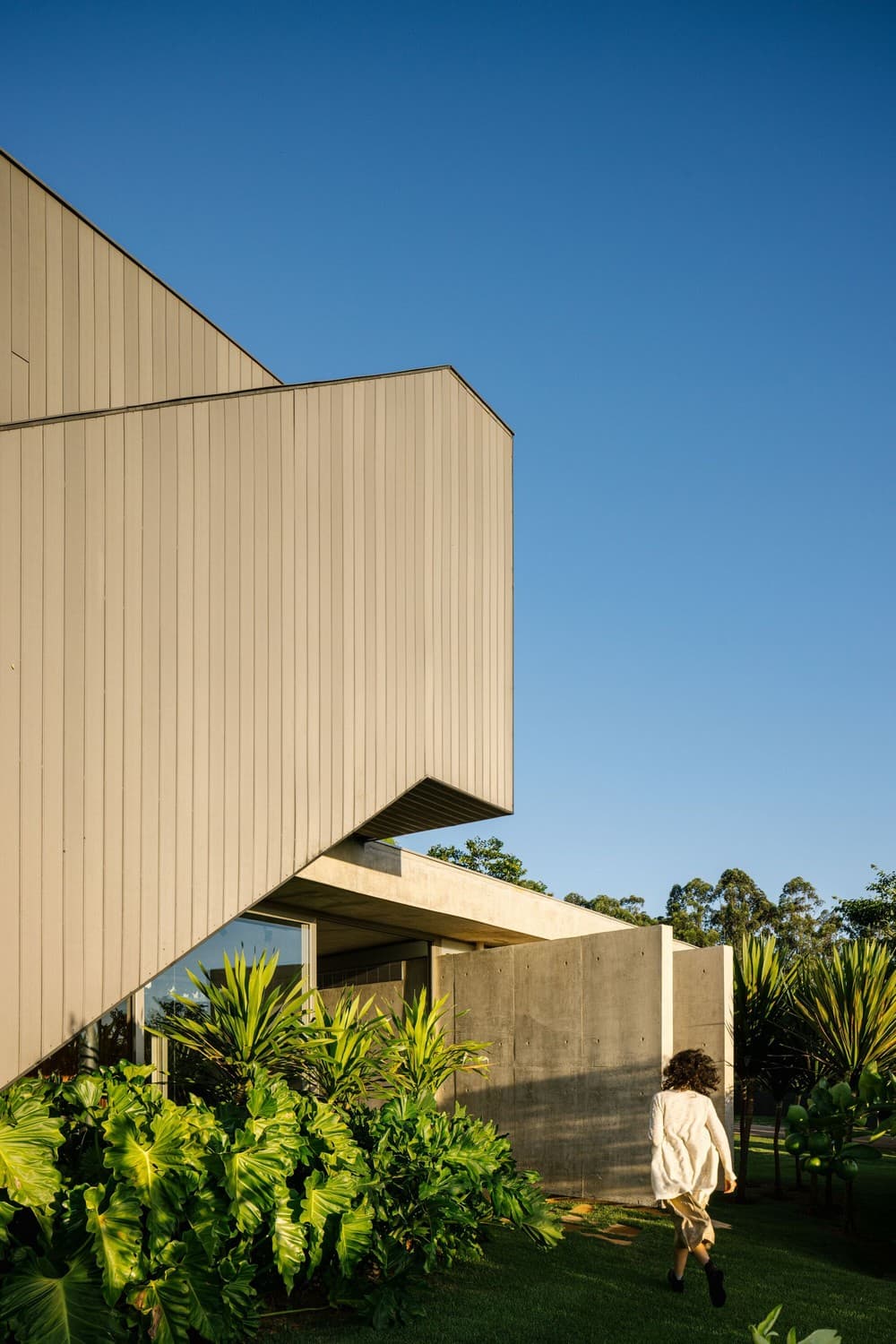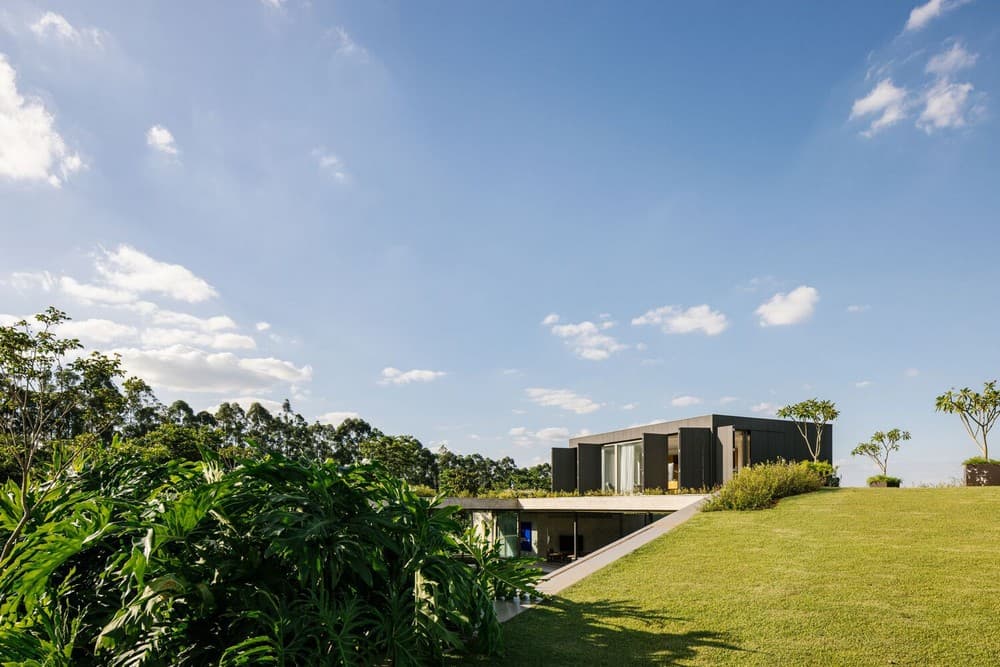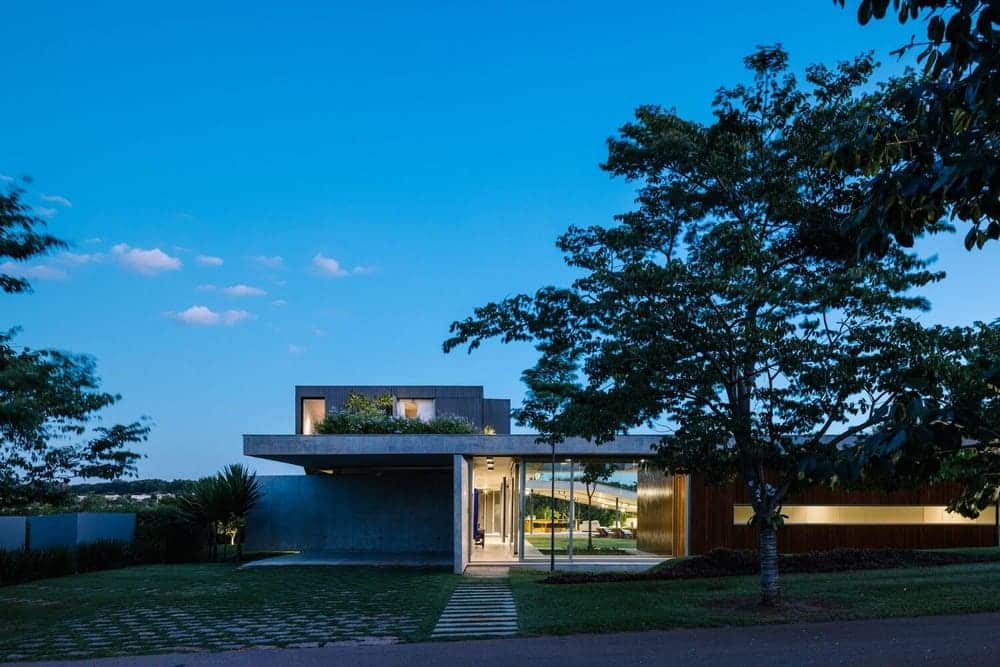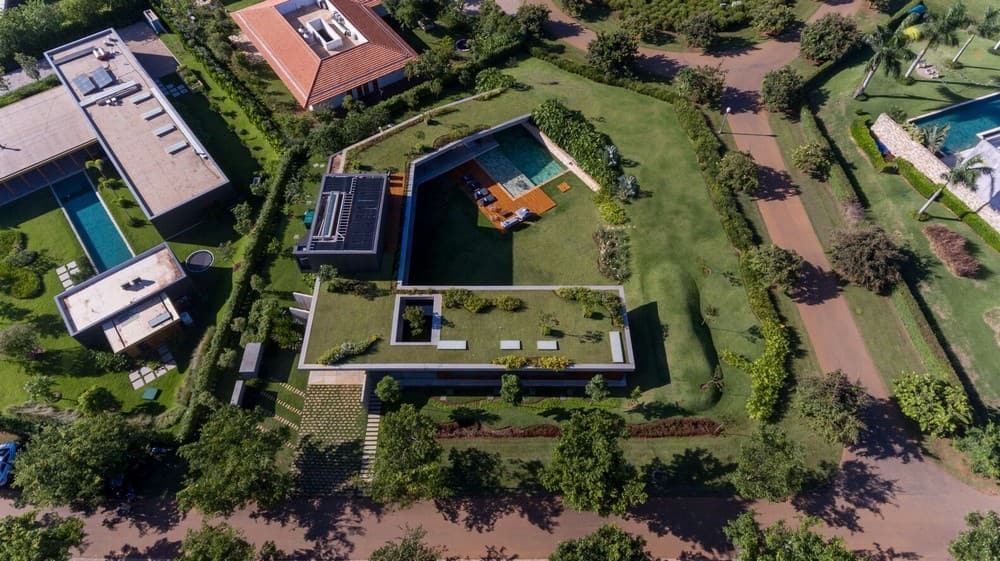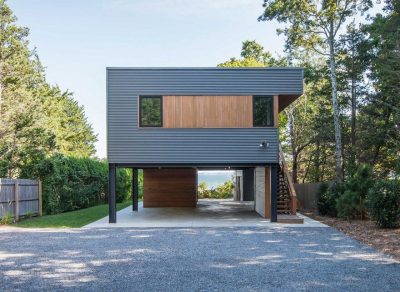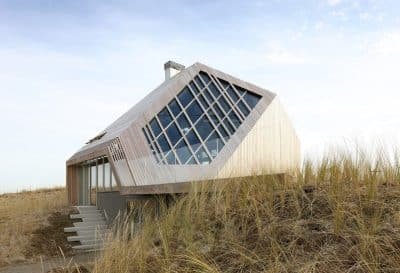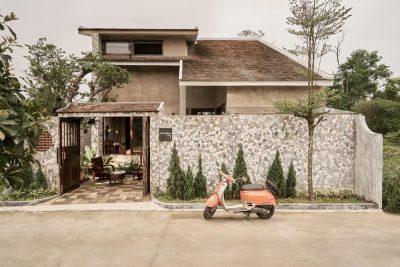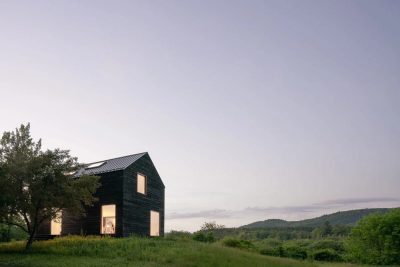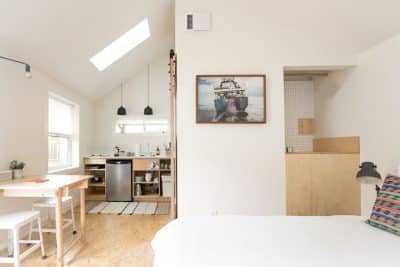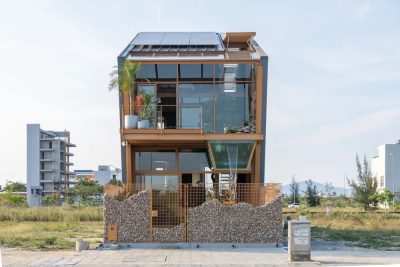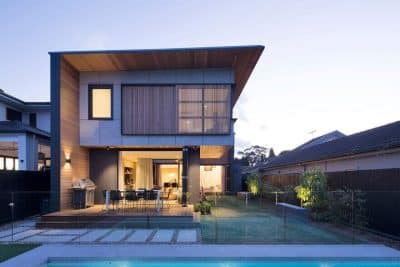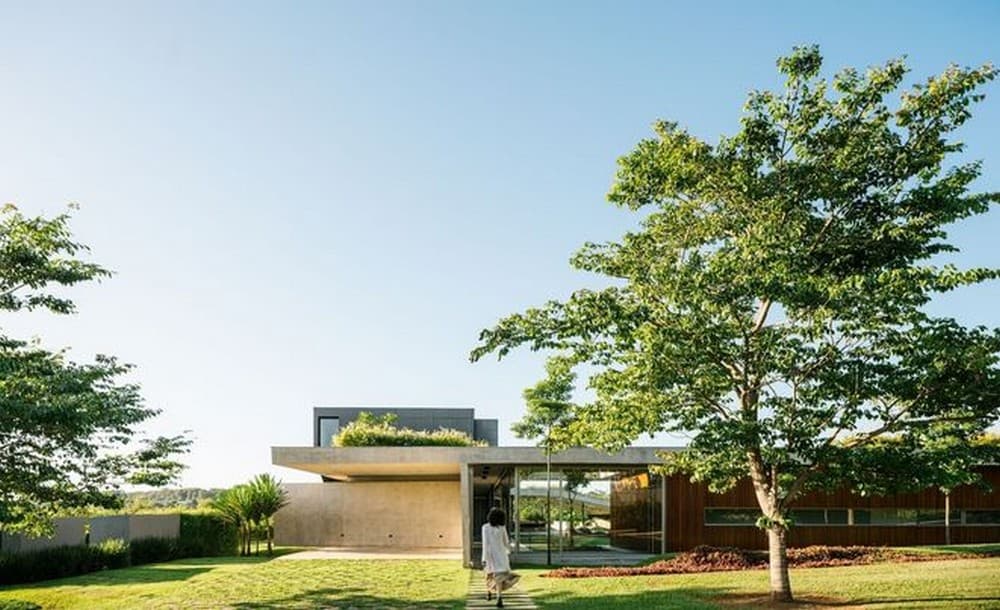
Architects: FGMF
Lead Architects: Fernando Forte, Lourenço Gimenes, Rodrigo Marcondes Ferraz
Coordinators: Gabriel Mota, Juliana Cadó, Luciana Bacin
Interns: Aryane Diaz, Giovanna Custódio, Matheus Soares, Raquel Gregorio
Location: Porto Feliz, Brazil
Area: 810 m²
Year: 2019
Photo credits: Fran Parente
Text by FGMF
The FGMF office signs the architecture and interior design of Colina House, a residence located at Fazenda Boa Vista, in Porto Feliz, in the interior of São Paulo. The slight unevenness of the land was an essential inspiration for conceptualizing the project, designed in such a way that makes the most of the existing topography. The highlight is the creation of an extensive ramp that, inclined, merges with the ground, configuring an extensive garden over the house, mimicking the land from some external points of view.
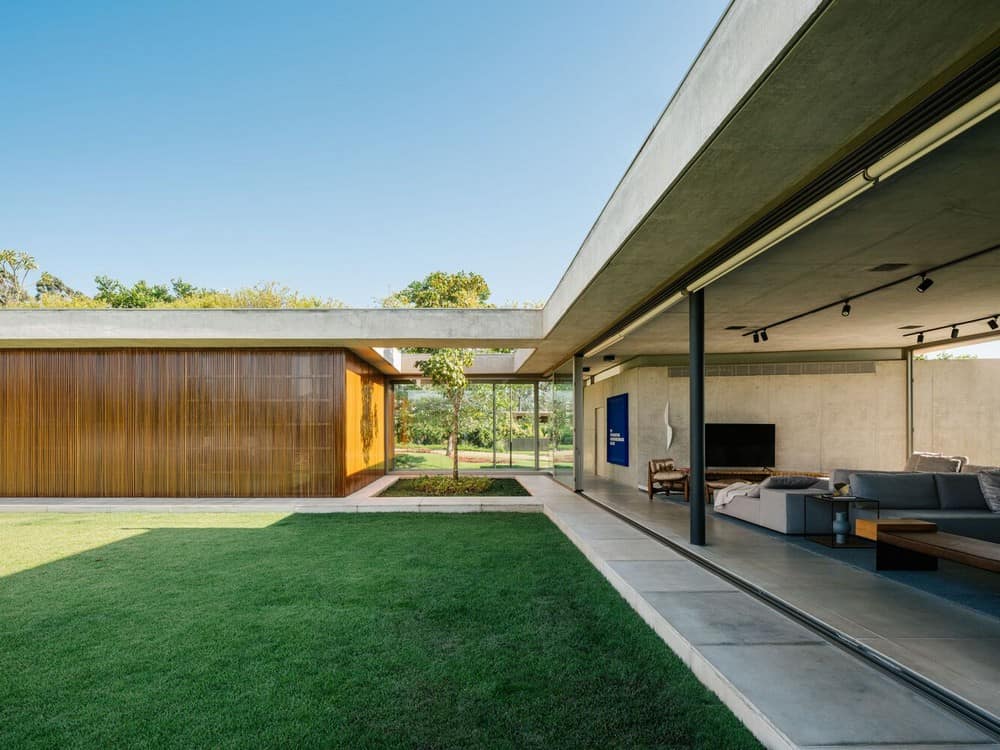
The residence is part of a proposal of simple concepts. A perimeter organization, predominantly one-story, follows the peculiar shape of the land and its mandatory area left vacant, creating a semi-internal patio, lowered in relation to the street that guarantees privacy to the residents without losing the relationship with the external areas. The result is a format resembling the letter “c”, which allows visual contact with all the ground floor environments of the residence.
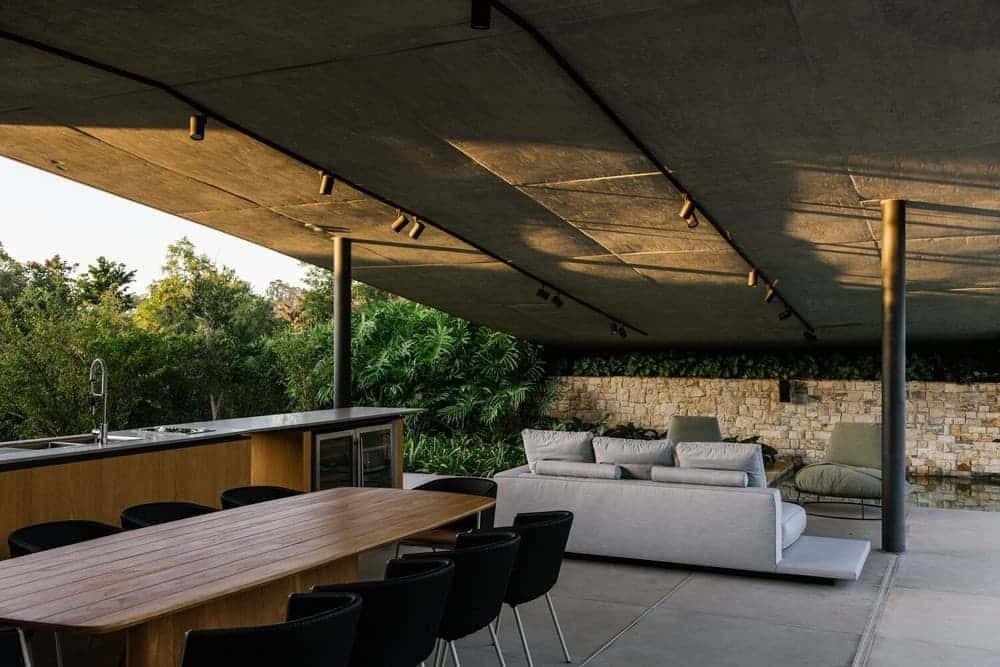
The architectural highlight is the walkway that comes from the land and rises, covering the external social area, opening into a flat concrete slab with access to the master suite. For the architects of the FGMF office, “the use of a ‘suspended garden’ accessible in a ramp, which covers the extensive program of the house, made it a space that is at the same time very integrated with each other and a little discreet from the external look, providing a dynamic of use that meets the wishes of the residents”.
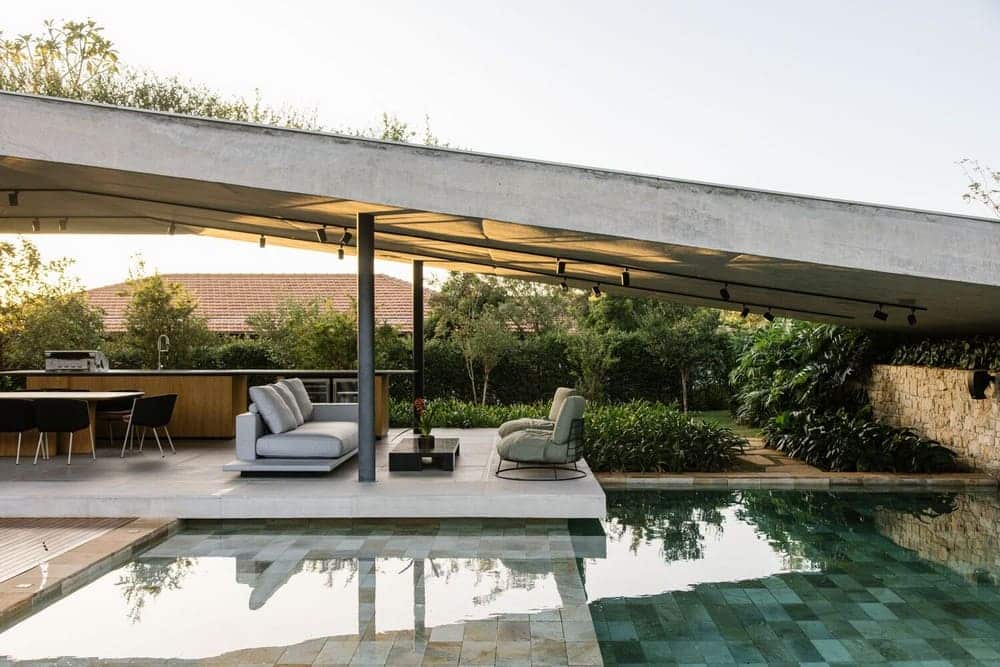
The use of different closing materials helped to reinforce the sectioning of the environment of the house. The social and leisure area is glazed with the possibility of being fully opened, the guest wing has a wood treatment that when closed turns into a monolithic block under the slab, and the service areas are closed with hollow wood shutters.
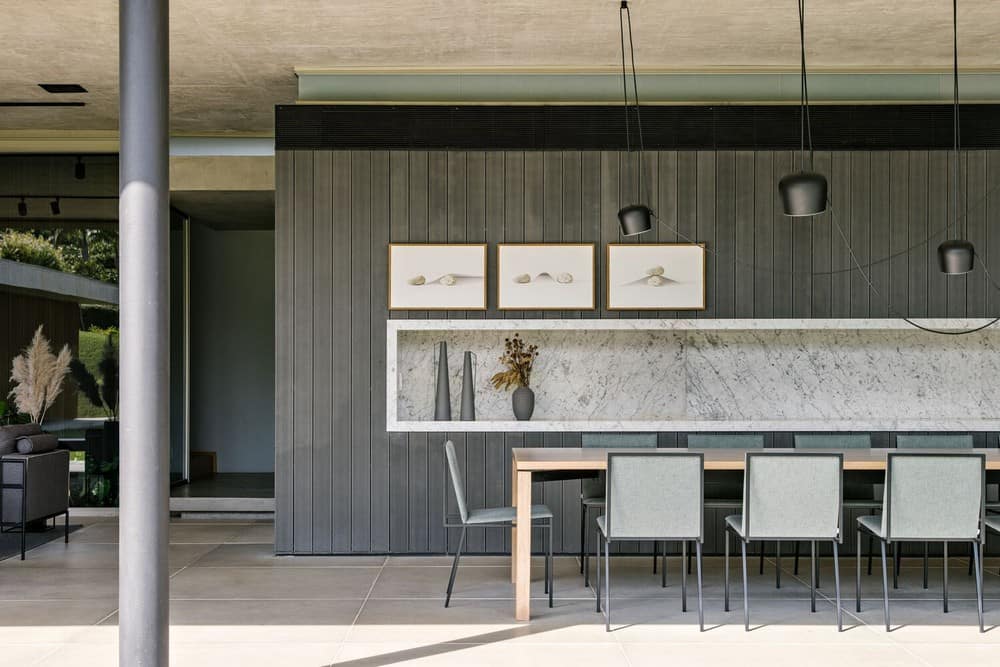
There is only the main suite’s stronghold on the upper slab. The space has a closure that continues through the stairs with the opaque elements on the ground floor. The large openings work as an element that is either closed or completely opened for enjoying the view of the pool and the sand court during moments of leisure and rest.
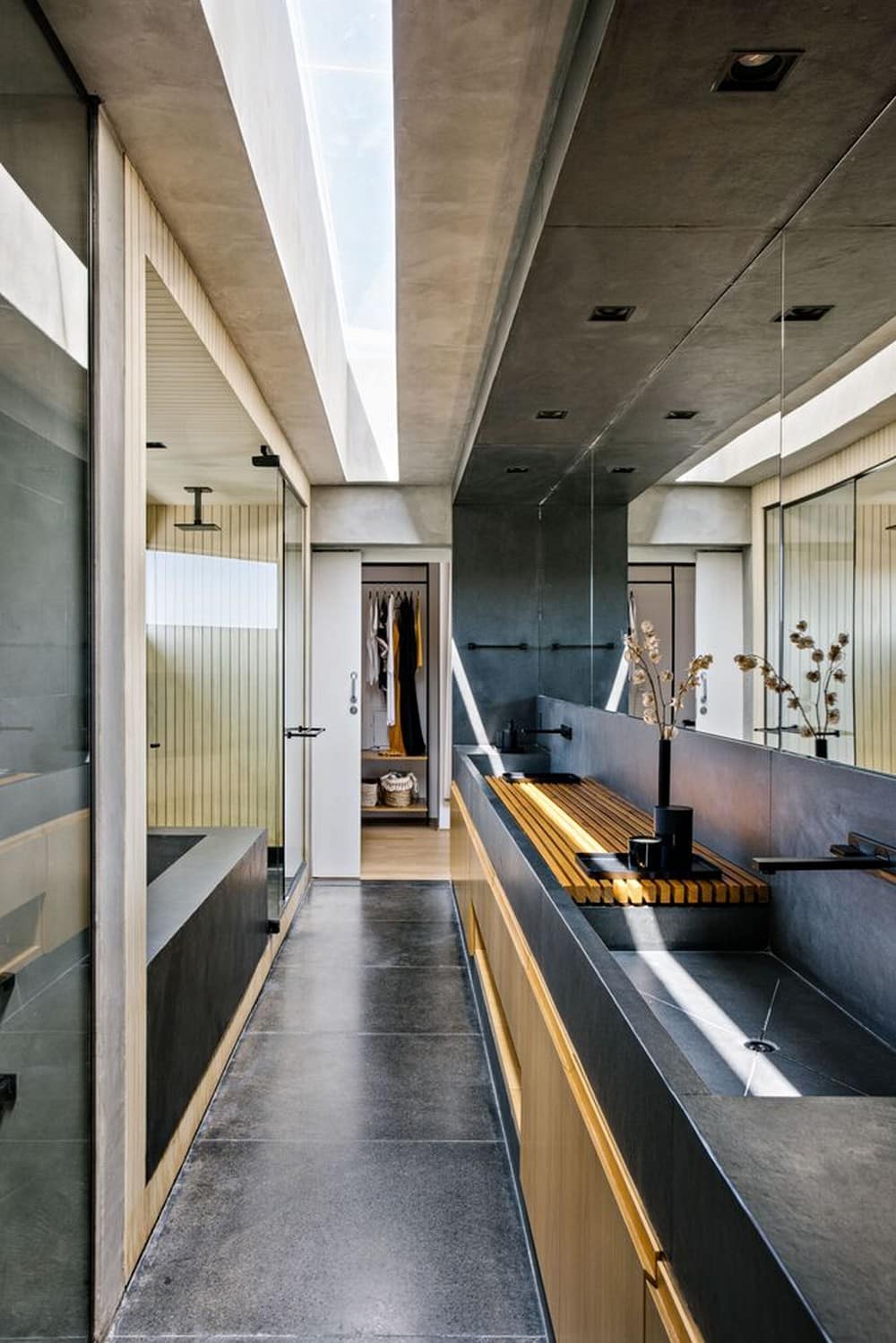
The project is also a minimal impact test on the land, which appears untouched when viewed from above. In addition to the garden, only the swimming pool, solarium, sand court, and some solar panels, responsible for keeping the residence energy self-sufficient, are visible from above. The large green roof provides thermal comfort and the extensive glass openings that allow cross ventilation help in the residence’s energy performance.
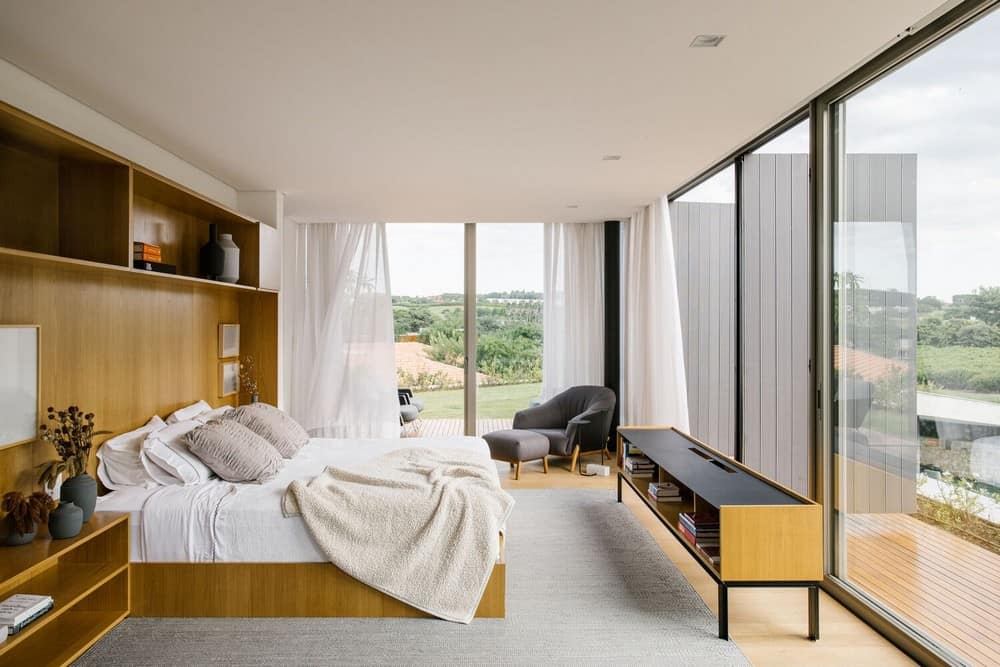
The office also signs the interior design. A minimalist concept brings a mix of pieces created by national and international designers. The combination allows the spaces for informal moments and leisure to slightly more formal events.
